A brief linear history of Paros
Paros has been continuously inhabited since the Paleolithic age, with various civilizations passing through the island. Here is a brief linear history of Paros over the last 10,000 years.
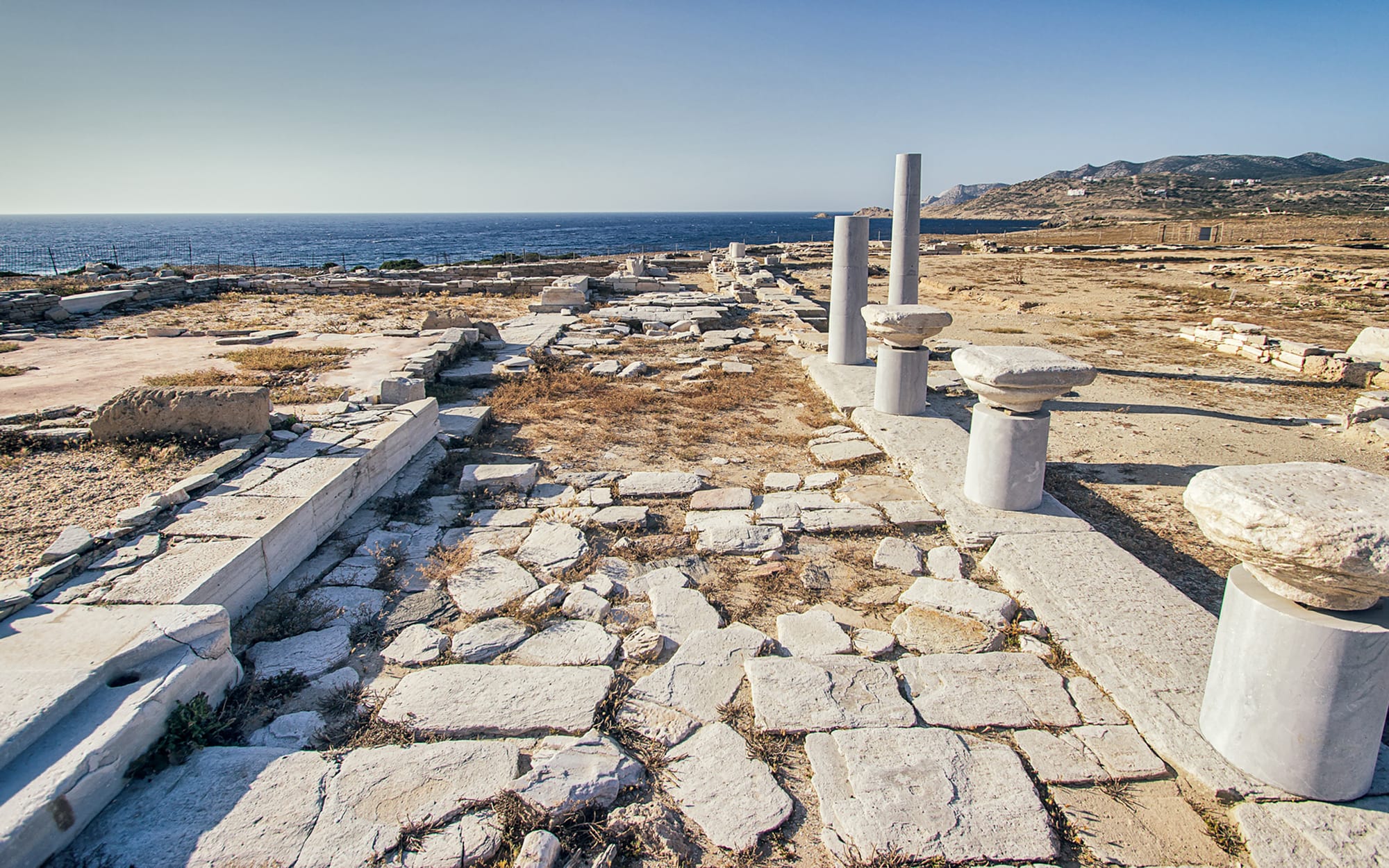
Paleolithic age
Paros has been inhabited since the Paleolithic age. This period is not much documented, but you can discover the secrets of Paros’ history by opening your eyes and looking around and inside the island. When you stroll around the island, search the stone walls and the fields. It is often possible to distinguish stones that the island's first residents used thousands of years ago, during the Paleolithic Age. They were probably living in caves in small groups. They indeed used the Cave of Demonon in Agios Georgios hill in Lagada of Aspro Chorio, the Cave of Antiparos and many other natural shelters.
4.300 - 3.900 BC - Neolithic age
Archaeologists discovered a village’s ruins from the Neolithic Age in Saliagos, a little isle in the north of the channel between Paros and Antiparos. There were probably other villages in other spots many hundred years ago. Ruins of Neolithic Age villages are continually being discovered in the Cyclades, especially in Mykonos, Ios, and Kythnos. These old-times residents were probably making their living mainly from fishing, hunting, and farming, which had already started its great adventure. The island of Saliagos is the spot with the oldest known history of Paros. You will find some artefacts of that era in the archaeological museum of Parikia, the most famous being the “Fat Lady of Saliagos”.
3.200 BC to 2.000 BC - Cycladic civilisation
The island is full of tombs from the Cycladic civilisation’s peak. The Cycladic figurines left on the graves enhance many museums in the Cyclades. Archaeologists found ruins of villages (settlements) of this period on other islands. In Paros, they were small settlements around the Kastro of Parikia, in Dryos (Pyrgaki), in Glyfa, in Alyki (Avyssos) and near Kolybithres of Naoussa where tombs of that time were discovered. Perhaps something more impressive is yet to be found.
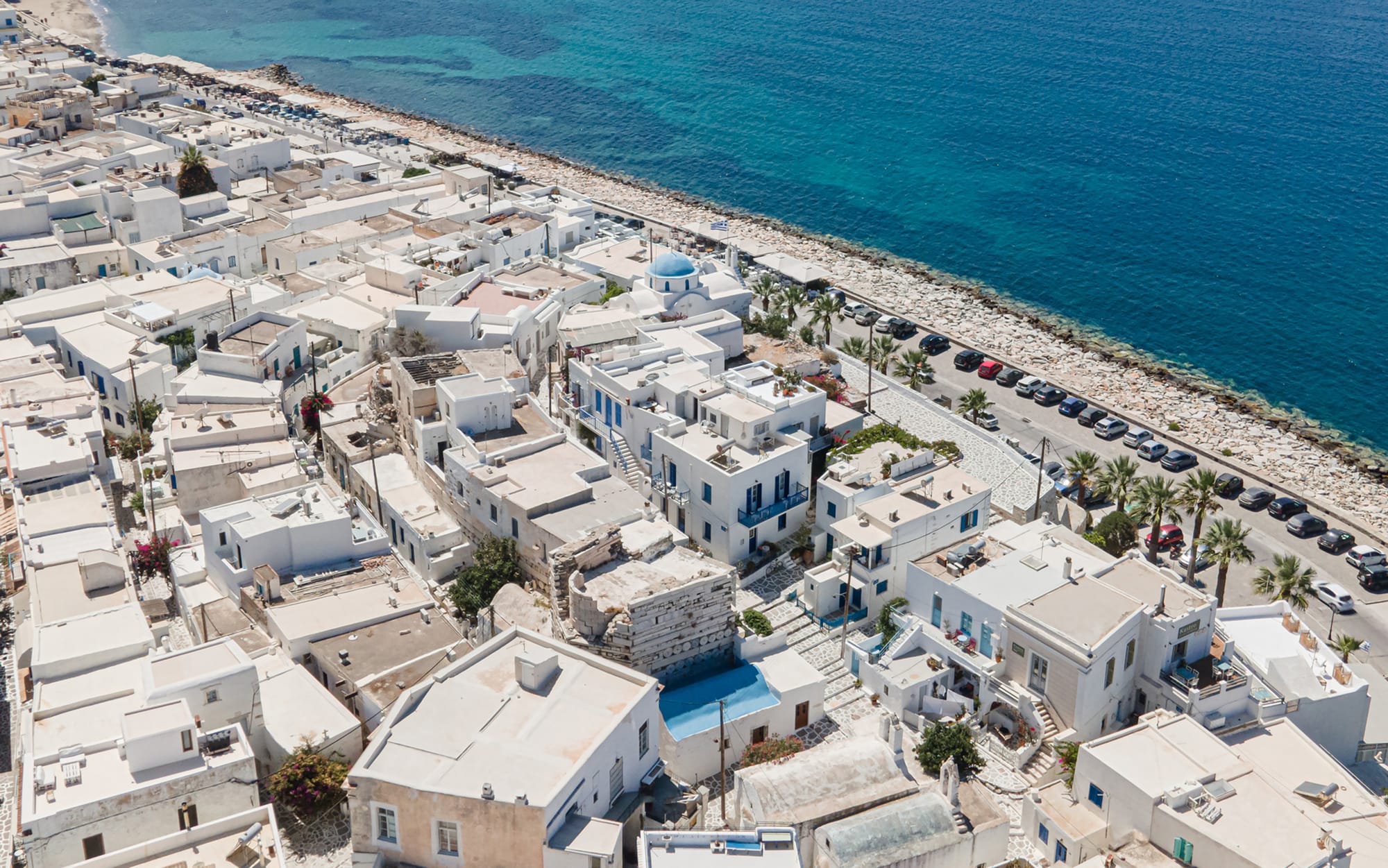
2.000 - 1.500 BC - Minoan times
The Minoan times haven’t left their mark in Paros as in Santorini. A settlement in the area of Kastro in Parikia is from 2.400 - 2.100 BC and was inhabited during the peak of the Minoan Civilization. The Minoan people didn’t settle down on the island but were passing merchants. We can witness a combination of Minoan and Cycladic civilisation in Milos, Kea and Santorini.
1.200 BC - Mycenaens
1.200 BC - Mycenaens
A significant Mycenaean settlement, with a palace protected by “Cyclopean” walls, was found in Koukounaries, near Naoussa. It was a fortress and was inhabited in the late 13th century BC.
1.100 - 800 BC - Phoenician domination
We don’t know many things from those years. The discoveries of Iron and Writing provoked a revolution that created new conditions everywhere. Dorians establish in the Peloponnese, while Phoenicians dominate the Mediterranean, including the Aegean.
800 - 700 BC - Homer’s and Archilochos' time
Many tribes’ movements are witnessed in the Aegean. Arcadians inhabit Paros, intermixed with Ionians who came later on the island. We are now in Homer times. Paros is developing into a maritime centre, and Archilochos is born. Ruins of that time can be found in the ancient cemetery where the poet’s father was probably buried and in Despotiko.
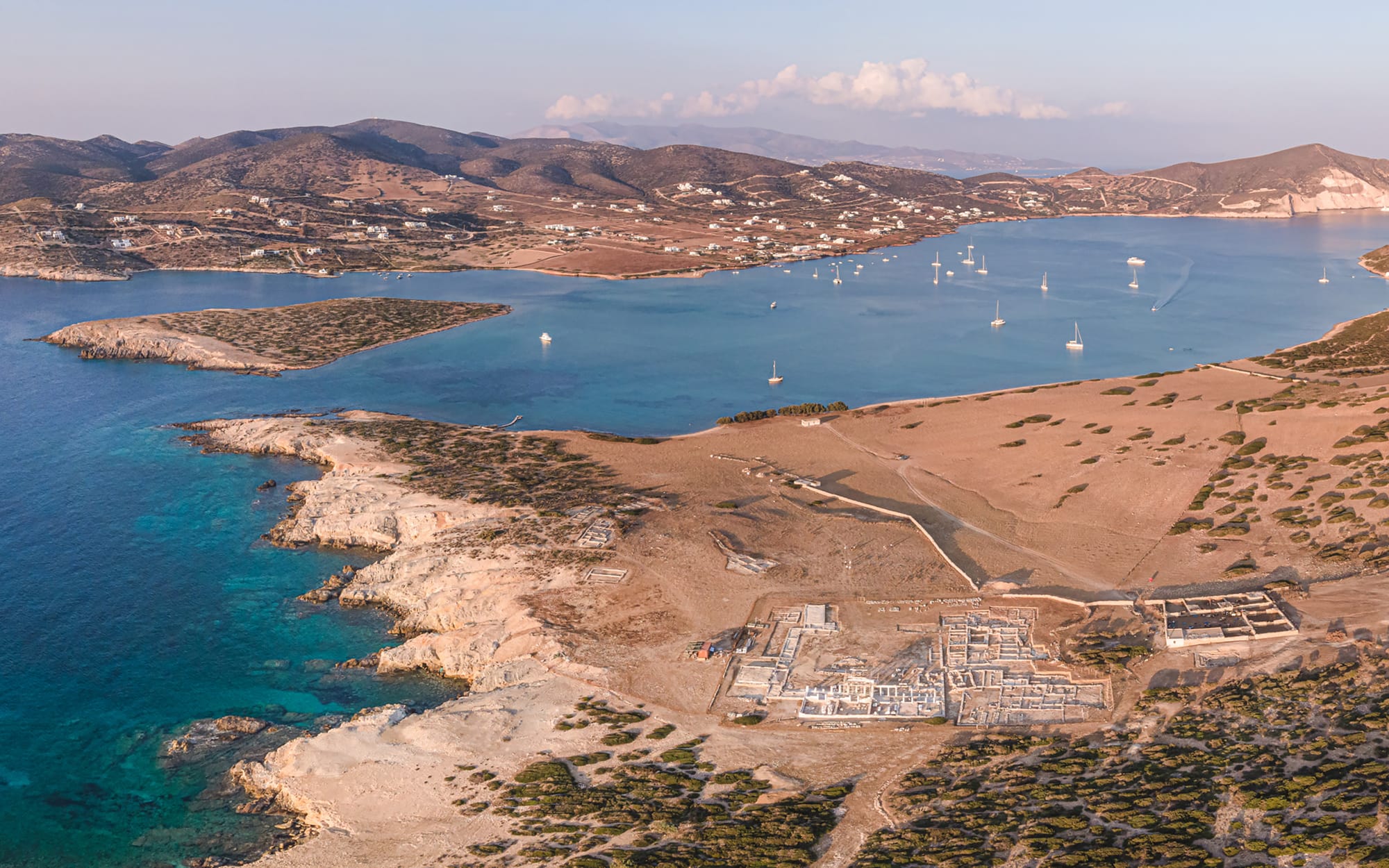
Many of the monuments found around Parikia are from this period. The emplacement of the temple of Dimitra, an important centre in the Cyclades and for all the Aegean, is still unknown. The temples of Eileithyia, Ypatos Dias, Aphrodite, Delion, Asklipeio and Pythian Apollo are on the hills around Parikia. But the position of the ancient city’s theatre has not been found yet.
146 BC -The Romans are here
Later on, in 146 BC, Paros goes under Roman rule and is part of a Roman province that includes more islands and Central and Southern Greece. There are many Roman findings on the island and all the Cyclades. The city-states stop to exist as the great imperial power based in Rome makes its appearance. Of course, the previous rule of the Macedonians had also contributed to the disappearance of city-states. Even though we don’t have significant proof, Milos, Paros, Sifnos and Thera (Santorini) are at their peak. Delos continues to be the religious centre and is transformed into a trading harbour of the entire Aegean.
200 - 1.300 AD - Byzance
Ekatontapyliani and Treis Ekklisies are representative of Byzantine times. During this period, there is also no city-state but a central power in Constantinople. The islands continue their lives, but at the same time, they become navy bases along with other activities.
1.300 - 1.600 AD - The Venetians
That’s the Venetian Times, the dominance of the Franks when the Kastros were built in Parikia, Naoussa, Kefalos in Marpissa, and Antiparos. It is worth noting that the conquerors bring along other languages. It is when old monuments from previous ages become valuable and are collected by the rulers who ship many of them to their homeland.
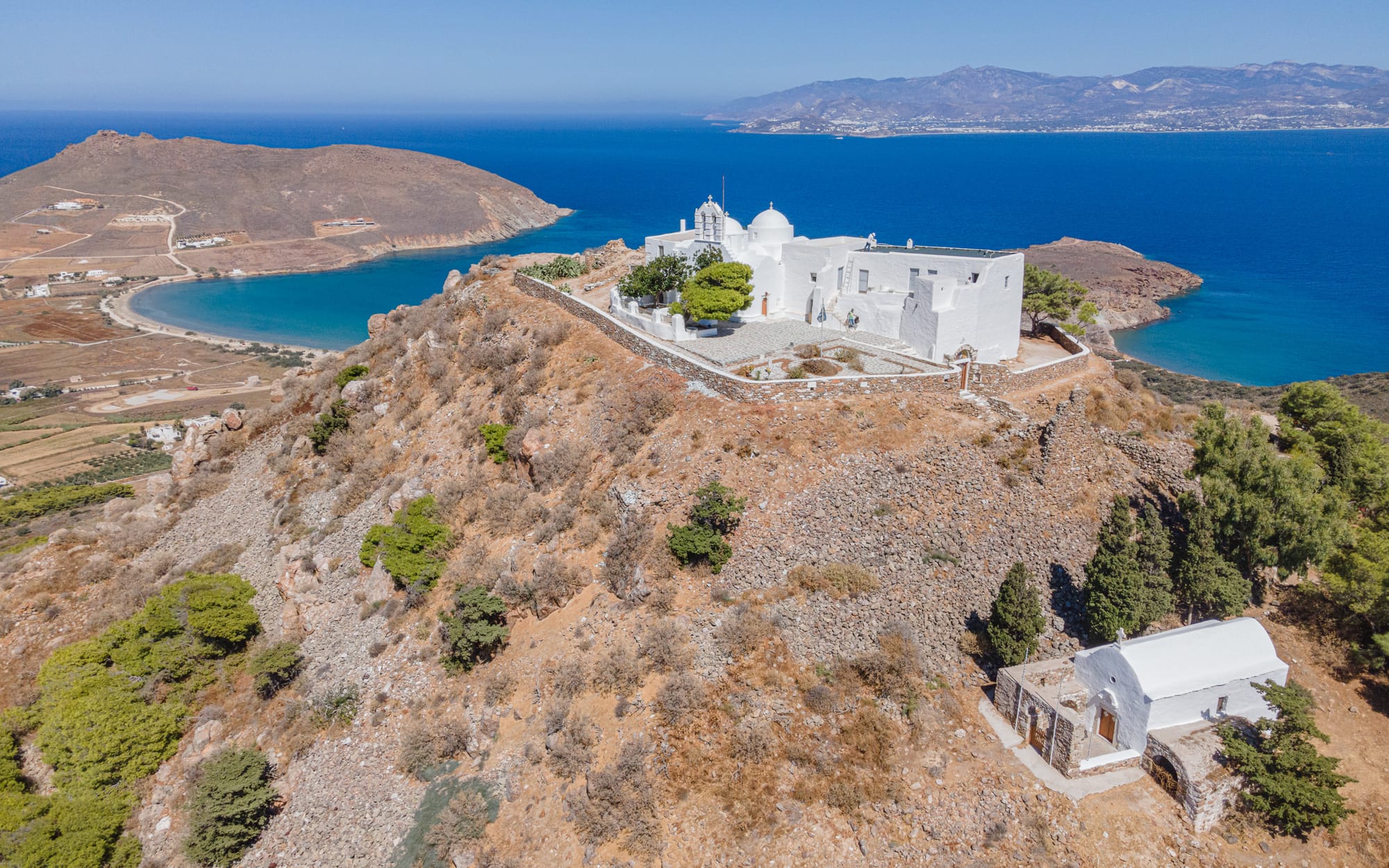
1.600 - 1.830 AD - Ottoman Empire
The Ottoman period did not leave many monuments as we didn’t have Ottomans living on the island, but only soldiers and public servants who collected taxes periodically. It is the time when new villages are created, such as Lefkes, Kostos and Marmara.
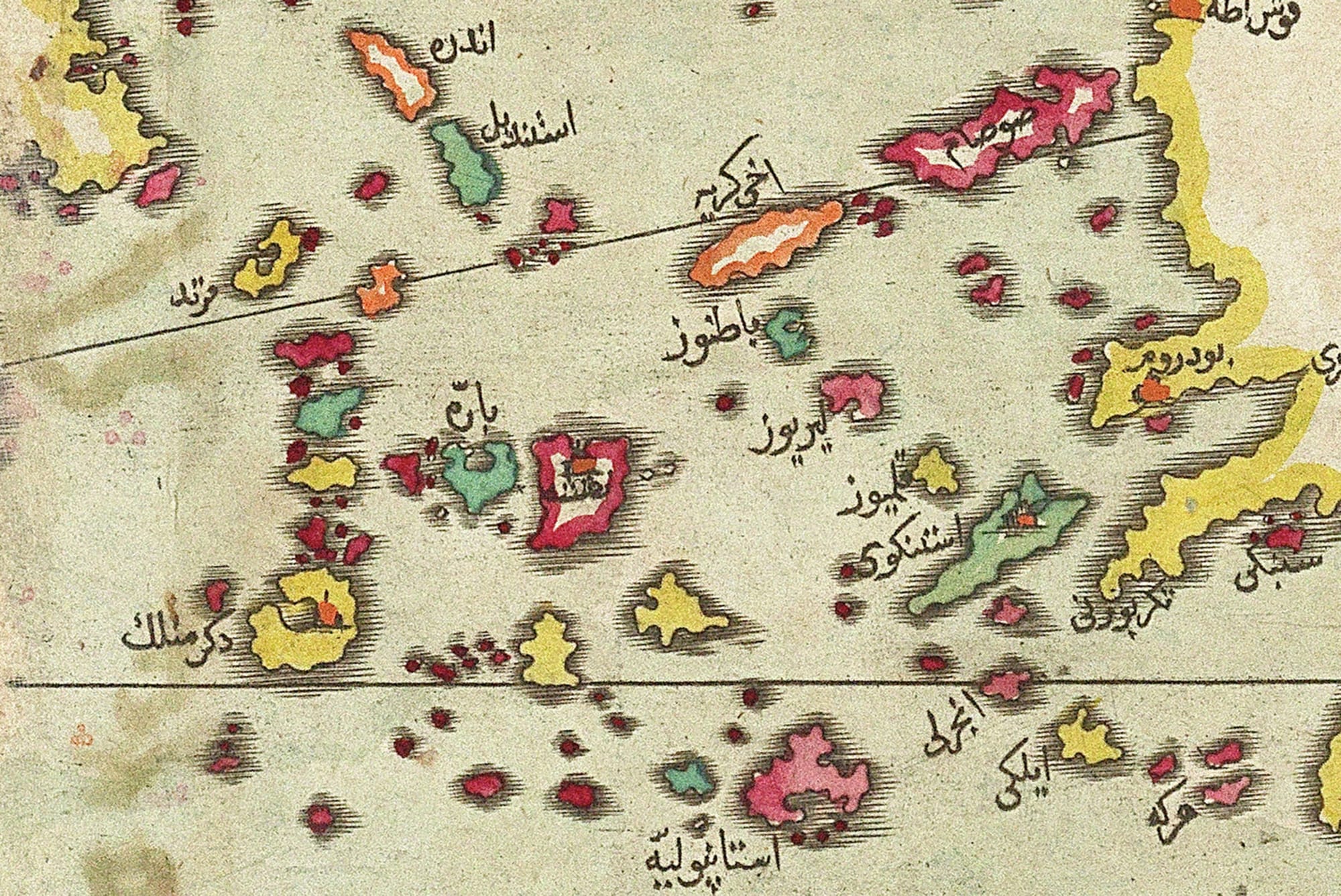
1.830 - 1.970 AD - Greece
After the formation of the New Greek State, Paros follows the same course as the other islands. Liberation motivates the psychism of the people in the islands who are occupied with agriculture and fishing. A great insular, mostly autarkic, civilisation is developed. WWII and the Greek Civil War brought significant poverty, which resulted in waves of emigration to the US, Australia and richer European countries.
In our days - Expansion of tourism
Since around 1970, the global expansion of tourism, and modernity in general, reached Paros, and we started witnessing a decline of the old insular civilisation with the arrival of the unknown until then mercantile values. Farmers and fishers quit their occupations to become tavernas or room rental owners. Land use also starts switching as real estate develops, and the island's natural environment takes the first hit.
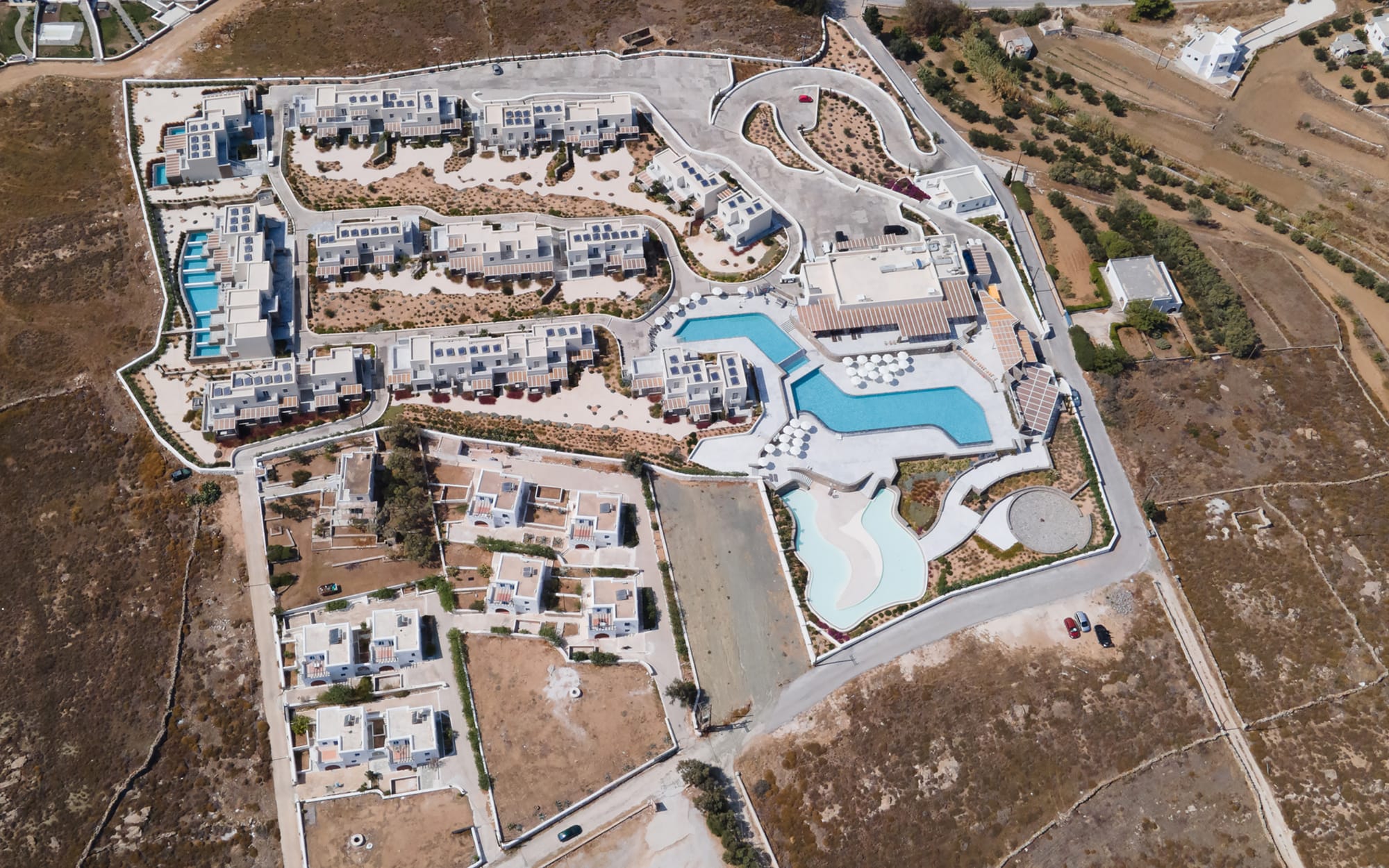
The island today is at risk of losing its unique identity, which has made it a popular tourist destination. Additionally, there is a concern that economic activities will shift from locals to foreign operators, potentially harming social cohesion.
We witnessed a surge in tourism and construction in 2019, which was briefly interrupted by the pandemic but has since resumed with even greater intensity. It is crucial that we act now to ensure sustainability.








